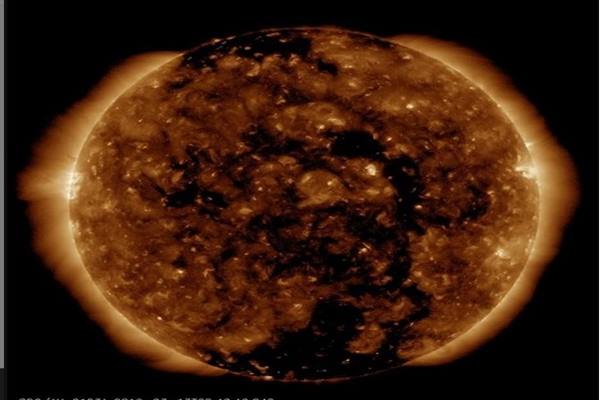Harianjogja.com, JAKARTA – Space weather forecasters are preparing for clouds of hot plasma and magnetic fields from the Sun striking the planet.
The so-called coronal mass ejection (CME) was seen emerging from the Sun on Wednesday and could deliver a “glimpse punch” to the planet.
The CME is a large cloud of charged particles and magnetic fields flowing from the Sun’s corona – the outermost layer of a star’s atmosphere. According to the US Center for Outer Space Weather Prediction (SWPC), CMEs can reach the planet at speeds between 250 km per second and 3,000 km per second.
Astronomers at SpaceWeather.com have now warned yesterday’s CME could reach the planet on Saturday.
The warning came after a large filament erupted from the Sun’s southern hemisphere. The filaments split the Sun’s atmosphere wide open and release a cloud of debris into space.
“Imagine a 50,000-mile canyon with towering walls of red-hot plasma. Yesterday, there was one on the Sun. It was formed when magnetic filaments lifted from the southern hemisphere. The glowing wall remained intact for more than six hours after the explosion.” wrote the astronomers as reported by the Express.
Also read: Jogja City Government Bans Fireworks Party on New Year’s Eve
The debris left behind from the explosion was photographed by NASA’s STEREO-A spacecraft and the Solar and Heliospheric Observatory (SOHO).
“First look data suggest it may deliver a fleeting blow to Earth’s magnetic field on November 28.” said spaceweather.
When CMEs interact with Earth’s magnetosphere a region of space dominated by Earth’s magnetic field, they can cause geomagnetic storms (solar storms).
“Geomagnetic storms are major disturbances of the Earth’s magnetosphere that occur when there is a highly efficient exchange of energy from the solar wind to the outer space environment around Earth. These storms result from variations in the solar wind that produce large changes in Earth’s currents, plasma and magnetospheric field.” clear SWPC.
The strongest solar storms are usually associated with the arrival of the CME.
And depending on the strength of the CME, scientists will rank the resulting storm on a “G1 Minor” to “G5 Extreme” scale.
Disturbance
At low scale, small storms can cause some disruption to satellite operations and weak power grid fluctuations can occur.
Weak storms can also create beautiful aurorae in northern latitudes. At the top of the scale, extreme storms can cause “widespread voltage control problems” and power outages.
Currently, SWPC does not predict the geomagnetic unrest seen over the next three days.
The agency’s forecast on Thursday morning (UK time) read: “A G1 (Small) or larger geomagnetic storm is expected.
“There are no significant transient or recurring solar wind features forecast.”
At the top of the scale, extreme storms can cause “widespread voltage control problems” and power outages.
Currently, SWPC does not predict the geomagnetic problems seen over the next three days.
Source: business.com
– .


